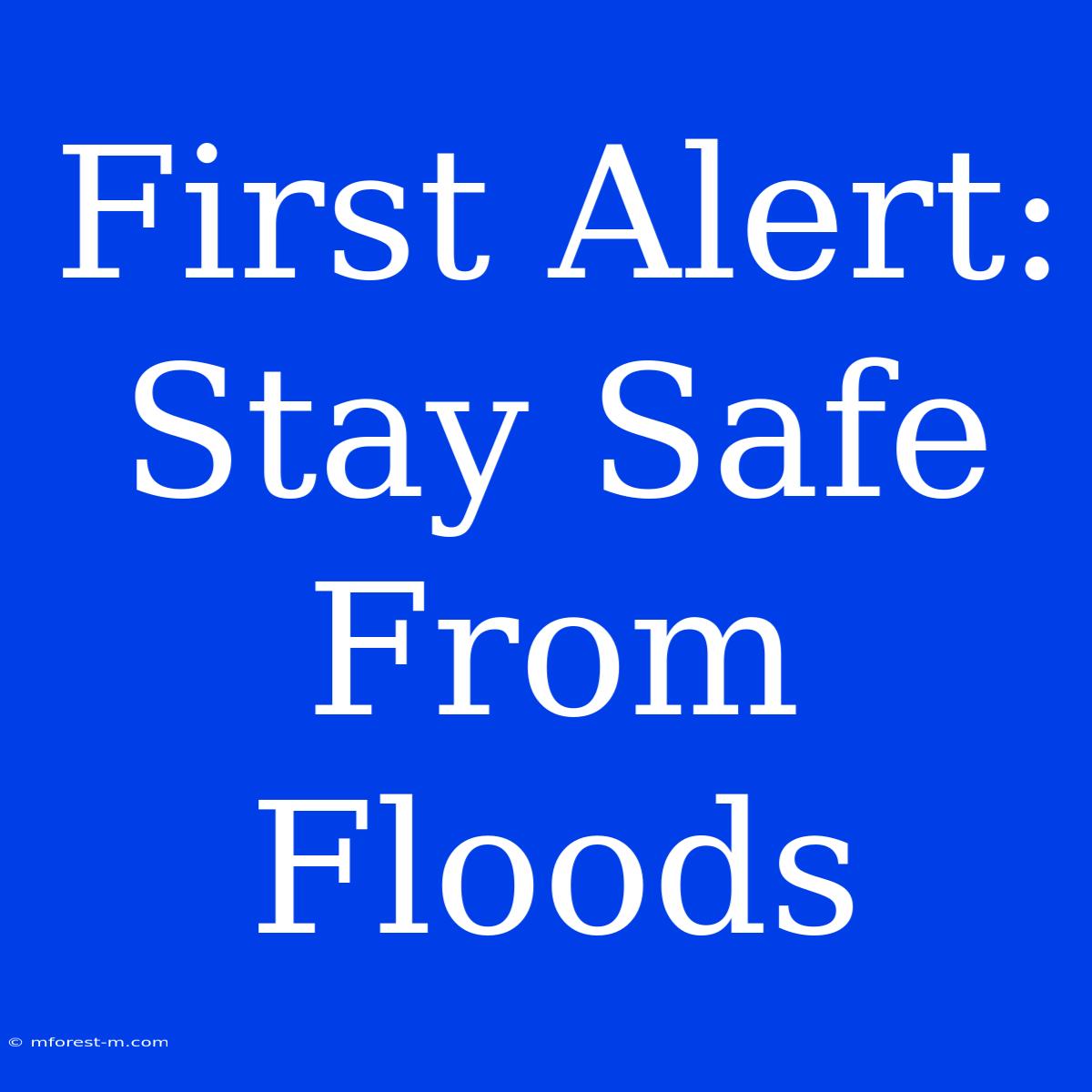First Alert: Stay Safe From Floods - A Guide to Flood Preparedness
Have you ever wondered what to do when a flood threatens your home? Floods are a serious threat, causing significant damage and disruption to lives and property. This comprehensive guide will equip you with the knowledge and tools to stay safe during a flood.
Editor Note: Floods can happen anywhere, anytime. Understanding the risks and implementing proactive measures is crucial.
Why is this important? Floods are among the most common and costly natural disasters worldwide. They can occur due to heavy rainfall, overflowing rivers, dam failures, or storm surges. The consequences can be devastating, impacting both personal safety and economic well-being.
Our research: We’ve meticulously analyzed flood safety resources, government guidelines, and expert advice to create this guide. We aim to empower you with actionable steps to navigate flood risks effectively.
Key Takeaways of Flood Safety:
| Key Aspect | Description |
|---|---|
| Awareness | Understanding flood risks in your area. |
| Prevention | Implementing measures to minimize flood damage. |
| Preparation | Building an emergency plan and assembling a survival kit. |
| Response | Knowing what to do during and after a flood. |
| Recovery | Recovering from flood damage and rebuilding your life. |
Flood Safety: A Comprehensive Approach
Understanding Flood Risks:
- Identifying Potential Hazards: Determine flood risk factors like proximity to water bodies, terrain elevation, and historical flood data.
- Monitoring Weather Forecasts: Stay informed about weather patterns and warnings issued by local authorities.
- Recognizing Flood Warning Signs: Be alert for rising water levels, overflowing drainage systems, and unusual water flow.
Flood Prevention Measures:
- Landscaping for Flood Control: Creating natural barriers like rain gardens and permeable pavements.
- Flood-Resistant Construction: Implementing design features that reduce flood damage like elevated structures and waterproof materials.
- Maintenance of Drainage Systems: Regularly clearing gutters and storm drains to prevent clogging.
Flood Preparation Checklist:
- Emergency Plan: Develop a detailed plan that outlines evacuation routes, communication protocols, and meeting points.
- Flood Kit: Assemble a survival kit with essentials like food, water, first-aid supplies, and emergency contact information.
- Important Documents: Store vital documents like insurance policies, identification, and financial records in waterproof containers.
During a Flood:
- Evacuate: Immediately follow evacuation orders issued by local authorities.
- Stay Safe: Avoid contact with floodwater, as it can be contaminated with sewage and hazardous materials.
- Communicate: Keep in touch with family and friends, and inform them of your location and safety.
Post-Flood Recovery:
- Safety First: Prioritize safety by checking for structural damage, potential hazards, and gas leaks.
- Document Damage: Take detailed photos and videos of flood damage for insurance claims.
- Clean and Disinfect: Thoroughly clean and disinfect affected areas to prevent mold and mildew growth.
Flood Safety: Beyond the Basics
Flood Insurance:
- Understanding Flood Insurance: Learn about the different types of flood insurance and their coverage.
- Contacting Your Insurance Provider: Discuss flood insurance options and get a quote.
- Reviewing Policy Coverage: Ensure your policy adequately covers potential flood damage.
Flood Warning Systems:
- Flood Warning Systems: Familiarize yourself with the warning systems in your area, including sirens, alerts, and social media updates.
- Registering for Alerts: Sign up for emergency alerts from local authorities and relevant agencies.
- Testing Your System: Ensure you understand and can access flood warnings effectively.
Flood Mitigation Strategies:
- Elevation and Waterproofing: Implementing flood mitigation measures like elevating structures and waterproofing basements.
- Flood Barriers and Pumps: Installing flood barriers and pumps to protect your property from rising water.
- Community Preparedness: Participating in community flood preparedness initiatives and volunteering for disaster relief efforts.
Floods are a serious threat that requires proactive preparation and response. By understanding the risks, implementing preventative measures, and building a robust emergency plan, you can significantly enhance your safety and resilience during a flood.

